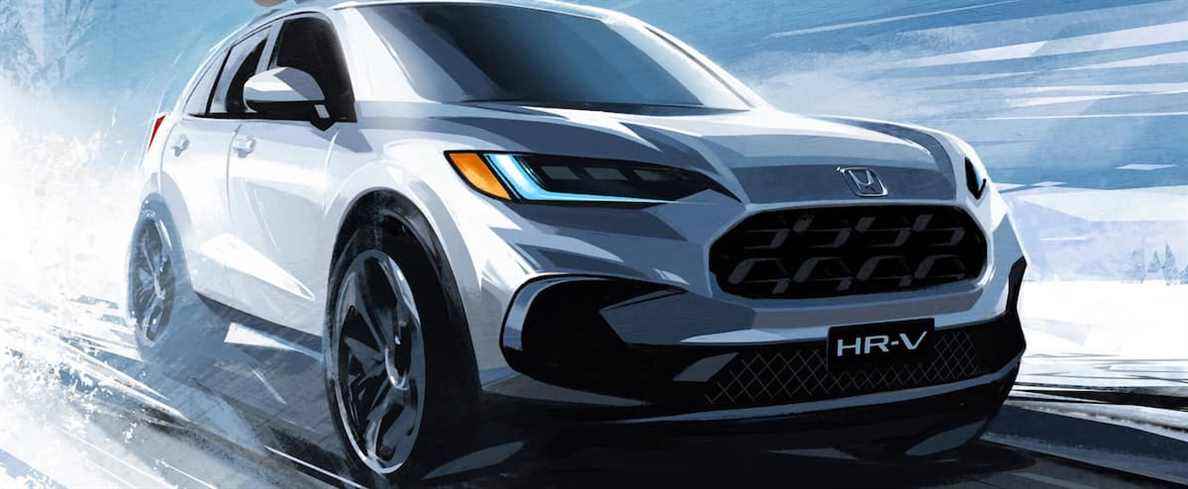Let’s go back two years, when COVID-19 was about to hit us.
Nissan had an aging range, not to say outdated, seeing its sales figures and profitability seriously affected. At that time, the manufacturer landed with the only new Sentra, a car that will have suffered severely from the upheavals of this damn pandemic.
It must be said that with changes in management and marketing strategy, then with the Carlos Ghosn affair, Nissan’s ambitions were to be slowed down. That said, we have noticed since then that the Japanese firm has been rolling up its sleeves, finally delivering many new products that change the perception of the brand and attract buyers. Over the past year, the manufacturer was therefore going to market its Rogue, Pathfinder and Frontier, in addition to the little Versa. The Z, the Qashqai and the new Ariya electric SUV followed. Until very recently in decline, Nissan would be on the verge of making up for lost time.
Similar at Honda
For different reasons, today we draw the same parallel with Honda which, during its most recent presentation to the media, boasted of a 5.3% increase in sales compared to 2020, which is lower than the industry average. We will of course have been given the usual excuses to explain certain delivery delays: pandemic, electronic chips, weather conditions and port congestion. Pitfalls which are well founded, of course, but which also exist for other manufacturers.
In truth, Honda watched the parade go by, relying on only a few reputable models to stay in the running. A logical strategy from an accounting point of view, but which certainly does not help the brand image which is currently suffering enormously. And for good reason, the abandonment in Canada of hybrid vehicles (with the exception of the Accord, sold a few hundred units annually), the absence of electric models and the proposal of an aging range do not come to arrange things…
Difficult besides to explain how a manufacturer as serious as Honda, moreover famous for its qualities of motorists, could cumulate the failures for each one of its hybrid models, whereas the customers were however not disinterested in it.
Just last year, Honda dropped the Clarity and Insight (for a third time), while dealerships piled up waiting lists for those models. Honda Canada probably preferred to focus on the Civic and the CR-V. Vehicles made here, in Canada, and which are obviously much more profitable than models made in Asia, Mexico or even the United States. Moreover, Jean-Marc Leclerc, President and CEO of Honda Canada, mentioned that 72% of the 147,658 Hondas sold in Canada in 2021 came from our factories. A percentage that could even increase over the next few years, with the arrival of a new generation of the CR-V.
Some good news
In the same way as on the side of Nissan, the overhaul of the Honda range therefore began this year with that of its compact sedan, the Civic. A car that remains at the top of its segment, although it is losing popularity as buyers increasingly turn to small SUVs.
That said, Honda has confirmed the arrival of several novelties by the end of 2022. In particular, that of the highly anticipated 2023 HR-V, which is in a popular segment, as well as that of the Pilot, which is currently career without major change for an eighth consecutive year. This sixth generation of the CR-V will also arrive, still assembled in Canada, which will now be offered in a hybrid version for our market, since it is manufactured here. You should know that Honda has been marketing a hybrid version of the CR-V to our American neighbors for a few years, a model being exclusive to them since the strategists at Honda Canada did not see fit to import it to us, again due to a simple matter of profitability, and because they didn’t want to cannibalize sales of Canadian-made CR-Vs.
Also for 2023 will land a new generation of the Accord, even if the midsize sedan market is in serious decline. We will also integrate the Prologue, the manufacturer’s first 100% electric crossover. A vehicle using Ultium batteries from General Motors, and which is likely to compete with the Ariya that Nissan is about to offer.
Thus, and in less than a year, Honda will have renewed a majority of models in its range, relegating the Odyssey, Passport and Ridgeline to the rank of “oldest”. Nothing is confirmed yet, but a hybrid Civic could also land, which would take up the torch of the defunct Insight, to compete with the Elantra and Corolla hybrids. Will this Civic see the light of day at the Alliston plant in Ontario? Will dealerships have enough inventory to give this car the success it deserves? To be continued.
Now, Honda Canada is also insisting on the changing customs of both buyers and dealers. Offering a new website and working on the possibility of online transactions, the manufacturer strongly encourages pre-orders from consumers, who can thus choose the model that suits them best. One way to ease the financial burden of dealers who have made record profits this year (generally speaking), even though sales in terms of volume have already been better.
In short, Honda is about to renew itself. Not only in terms of its products, but also in terms of customer experience. As for the non-availability of certain models for which the delivery times are unreasonable, we are told that the affiliation with the Californian firm Qualcomm (electronic chips), would make it possible to stabilize this situation by the end of the year.



